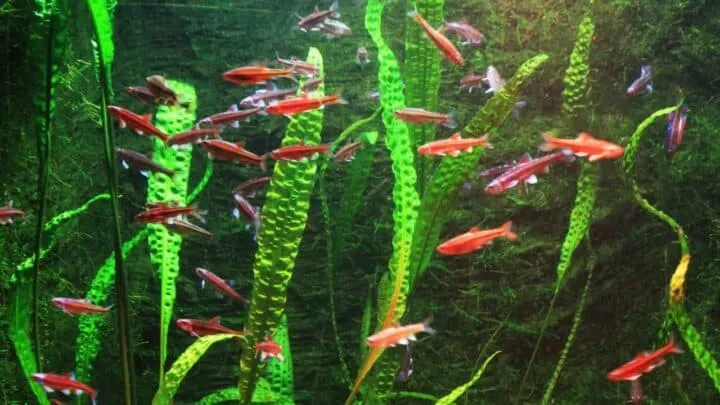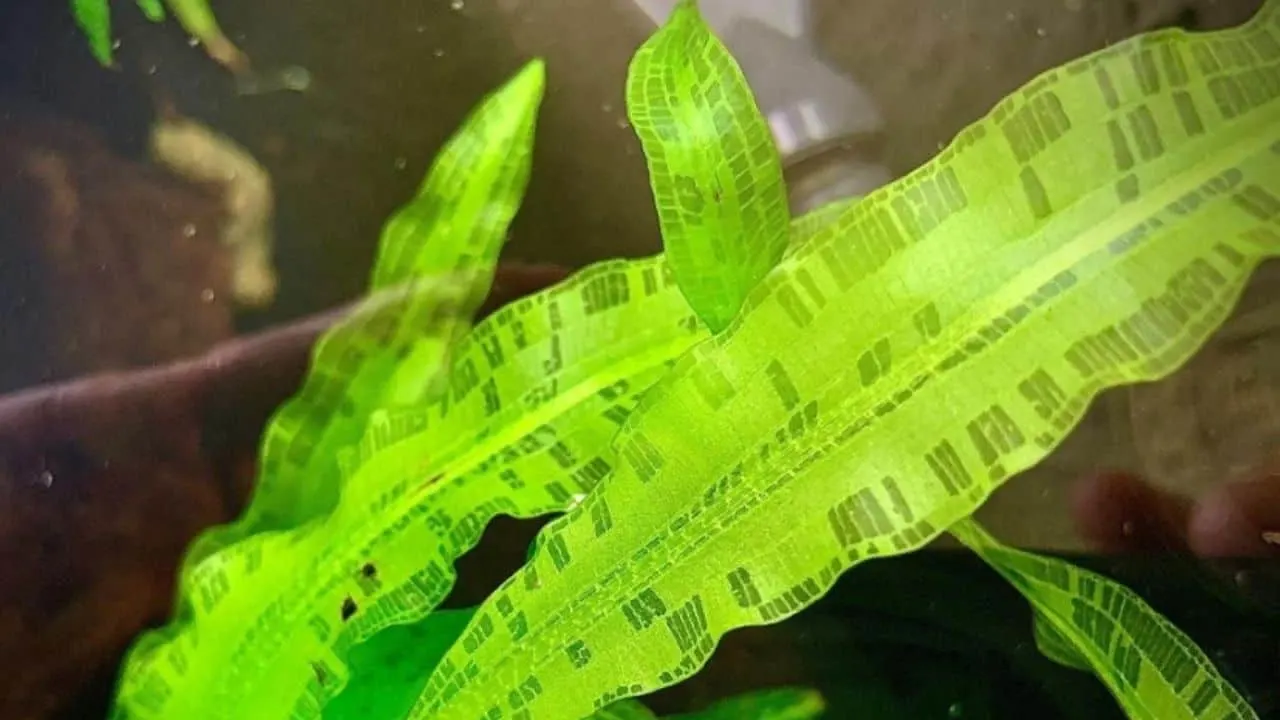Adding a plant into an aquarium can make it look amazing for several reasons. The first one is that it looks beautiful and you achieve a more natural look for your home.
Just a couple of aquarium plants can make your fish tank look so much bright and lively. There are various things that aquarium plants are useful for:
- Consuming nitrates and other wasteful chemicals from your tank
- Promoting health for your fishes
- Being good at converting carbon dioxide into oxygen
- Keeping the tank clean, which in return keeps your fishes happy
Beginners often have difficulty maintaining aquarium plants because they tend to forget that these plants still require attention.
Thus, here are some plants that are low maintenance, and even beginners will be able to care for them.
The Best Low Maintenance Aquarium Plants
- Marsilea Minuta
- Aponogeton Crispus
- Anacharis
- Hornwort
- Micro Amazon Swords
- Cryptocoryne Lutea
- Dwarf Sagittaria
- Bacopa Caroliniana
- Dwarf Baby Tears
- Marimo Moss Ball
- Java Moss
- Vallisneria Gigantea
- Mayaca Fluviatilis
Marsilea Minuta
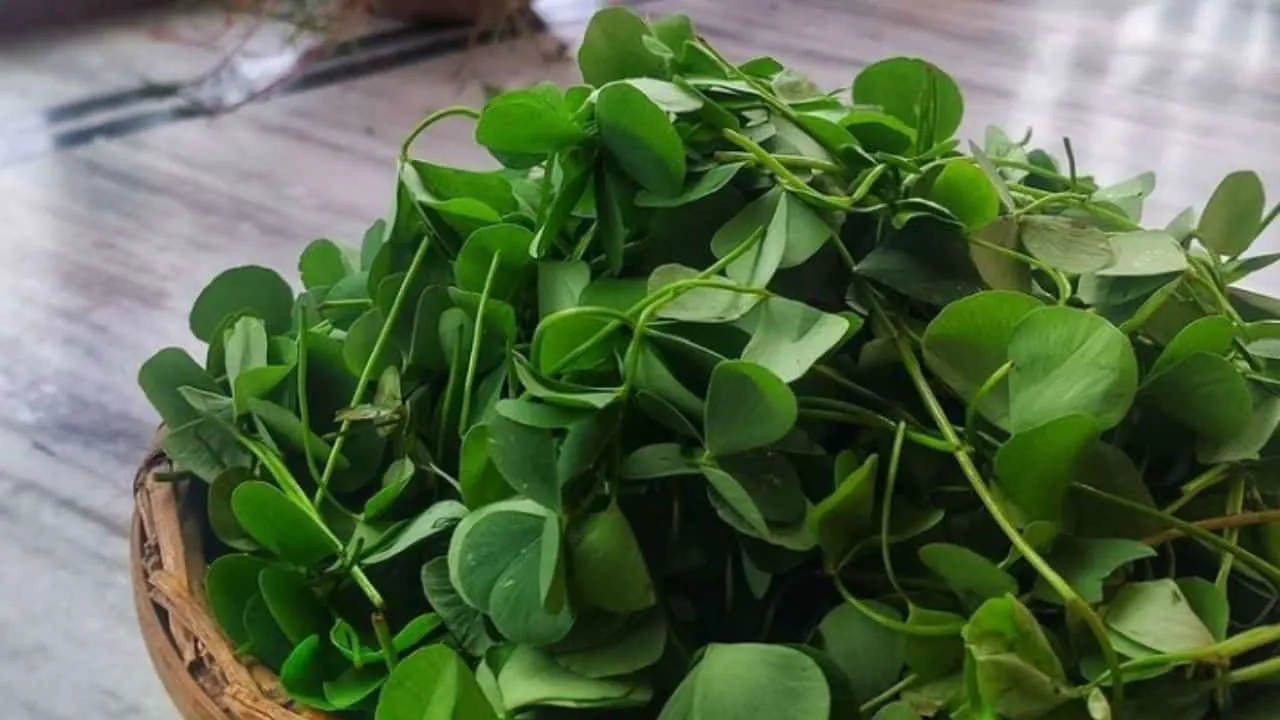
Photo Credit: @food_swings_mood_swings on Instagram!
Marsilea Minuta is a stunning aquarium plant that provides the ultimate aqua scaping experience. You can place this plant next to the dark stone, sand, or soil, and this will make your aquarium look even more beautiful.
The biggest reason why you should invest in this variety is that it is quite easy to take care of and grow. In fact, you might have to spend your free time trimming it.
Its binomial nomenclature and basic plant care requirements include:
- Common name: pepperwort, airy pepperwort, and pepperwort small water clover
- Scientific name: Marsilea Minuta
- Family: Marsileaceae
- Height: 5 – 20+ cm (2 to 8+ inches)
- Care complexity: easy
- Lighting needs: medium to High lighting
- Growth rate: fast
- Additional CO2 required: Not required
- Recommended position: Foreground to mid-ground
- Fertilization: Needs extra fertilization.
- Temperature: 71 to 82 degrees Fahrenheit (22 to 28 degrees Celsius)
This plant is well known for:
- Its clover leaves
- Its appearance when it spreads like a carpet in aquariums.
You can use Marsilea Minuta as a decorative plant to help accentuate the features of your tank, such as wood and stone. You can also use Marsilea Minuta as a protective carpet.
Aponogeton Crispus
Aponogeton Crispus is perfect for when you want to build fancy aquariums. It has beautiful flowers that grow quickly without you splurging too much on it.
Aponogeton Crispus is an excellent plant to invest in if you are looking for plants that are:
- Low maintenance
- Inexpensive
- Easy to care for
Its binomial nomenclature and basic plant care requirements include:
- Common name: Kekatiya, Wavy-edged Aponogeton, and Ruffled/Crinkled plant
- Family: Aponogetonaceae
- Scientific name: Aponogeton Crispus
- Max height: 8 to 12 inches (20 – 30+ cm)
- Care complexity: easy to care for
- Lighting needs: No specific requirements
- Growth rate: grows fast, and tall
- Flower: produces white flowers
- Additional CO2 required: not required
- Recommended position: Mid position
- Fertilization: Needs to be fed root tabs throughout the month.
- Temperature: 59 to 89 degrees Fahrenheit (15 – 32 degrees Celsius)
If you keep your Aponogeton Crispus under low lights, it grows wavy-edged leaves that develop from bulbs.
When your plant starts growing from the bulb, you just need to place it on the top of the substrate, and over time, it will sprout roots and leaves.
Anacharis
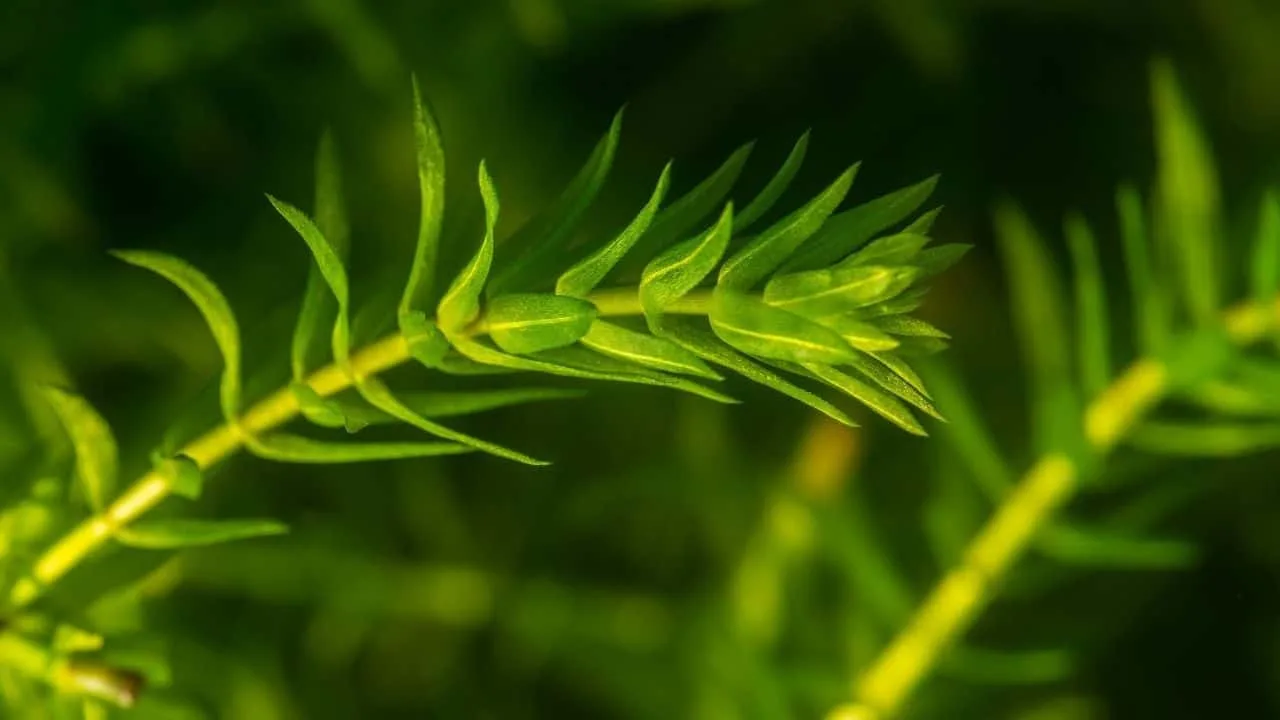
Anacharis is another beautiful, low-maintenance plant. It is quite easy to take care of and is also known to be a hardy plant.
Its binomial nomenclature and basic plant care requirements include:
- Common name: Brazilian waterweed
- Scientific name: Elodea
- Max height: over 6 feet
- pH: 7 .0 to 8.0
- Care complexity: easy
- Lighting needs: moderate lighting
- Growth rate: fast
- Additional CO2 required: none required
- Recommended position: background
- Fertilization: Needs to be fertilized often
- Temperature: 72- and 78-degrees Fahrenheit (22 to 25 degrees Celsius)
- pH: 6.5 and 7.5
- Hardness: 3 and 8 dKH
You can plant your Anacharis either directly into the soil or leave it floating on top of the tank.
If you plant it, leave one or two inches between each plant so that nutrients are equally divided.
Hornwort
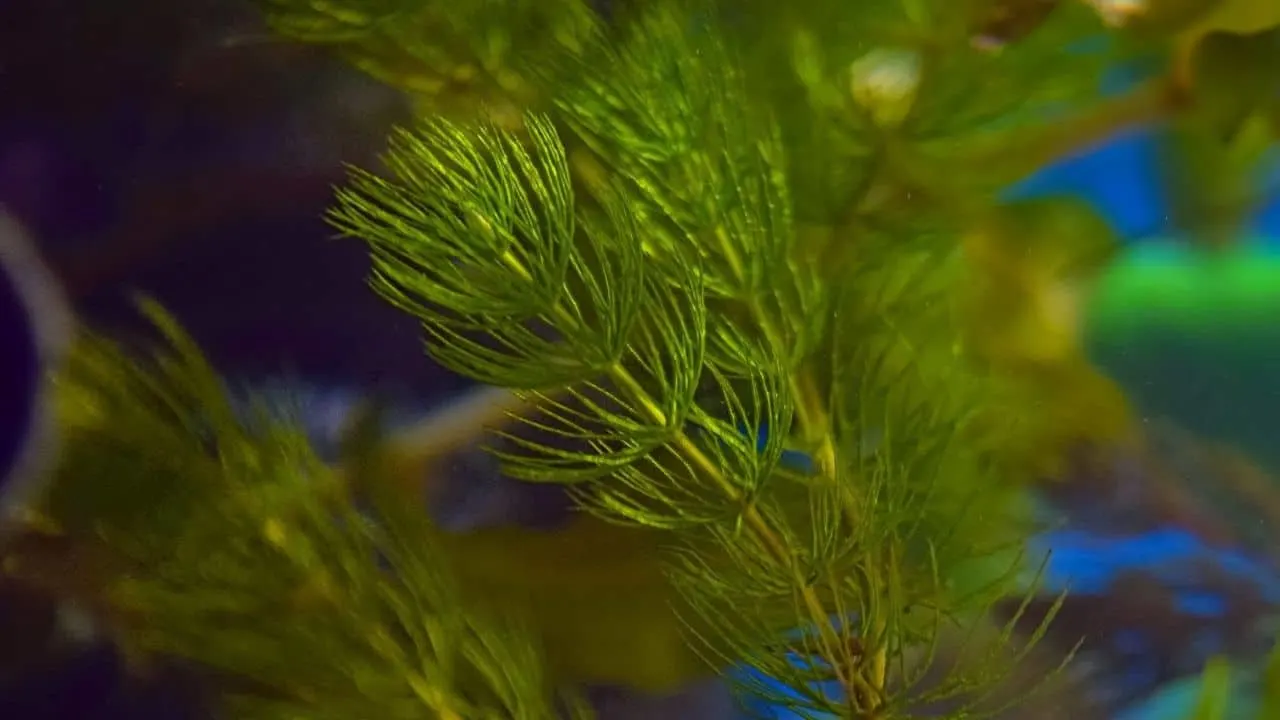
Hornwort’s one of the aquatic plants that you can easily grow. It is known to grow mostly in the wild and can be found everywhere other than Antarctica.
Its binomial nomenclature and basic plant care requirements include:
- Common name: horned liverwort or Hornwort
- Scientific name: Anthocerotophyta
- Height: 1 inch (2.5 centimeters)
- Care complexity: easy
- Lighting needs: moderate to high lighting
- Growth rate: moderate
- Additional CO2 required: not required
- Recommended position: mid to background
- Fertilization: not needed
- Temperature: 59 to 86 degrees Fahrenheit
- pH: 6.0 and 7.6
- Hardness: 5 and 15 GH
Hornwort can be left to float above the aquarium or anchored down into the substrate.
The position you keep your Hornwort in usually depends on the type of fish in your tank. For example:
- Surface dwelling fishes will benefit from floating Hornwort
- Mid to lower-level fish’s benefit from planted Hornwort
Micro Amazon Swords
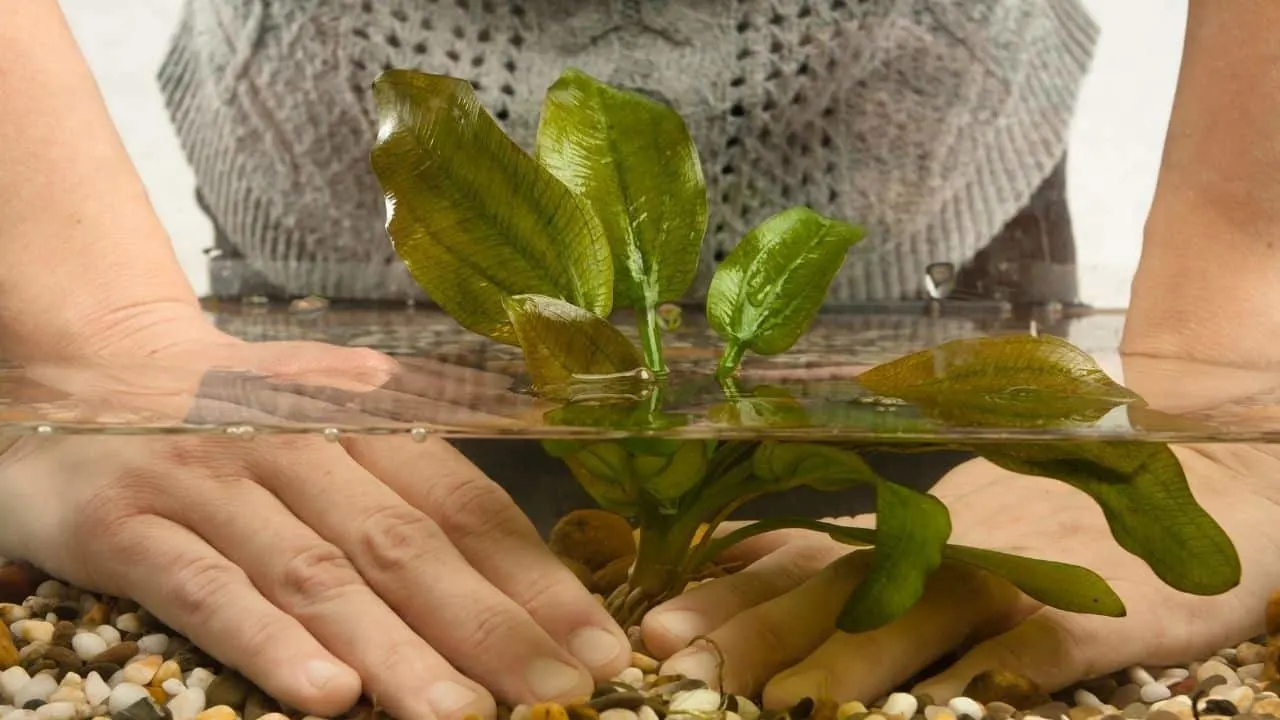
Micro Amazon Swords can be found in pots or in tissue culture. This plant can be easily split up, and thus, you can create more plants in a short amount of time.
Its binomial nomenclature and basic plant care requirements include:
- Common name: Micro Amazon Swords
- Scientific name: Echinodorus
- Max height: 16 inches (40 cm)
- Care complexity: easy
- Lighting needs: moderate to high lighting
- Growth rate: moderate
- Additional CO2 required:
- Recommended position: Mid-Ground
- Fertilization: Root Feed
- Temperature: 70 to 82 degrees Fahrenheit
- pH: 6.8-7.5
Cryptocoryne Lutea
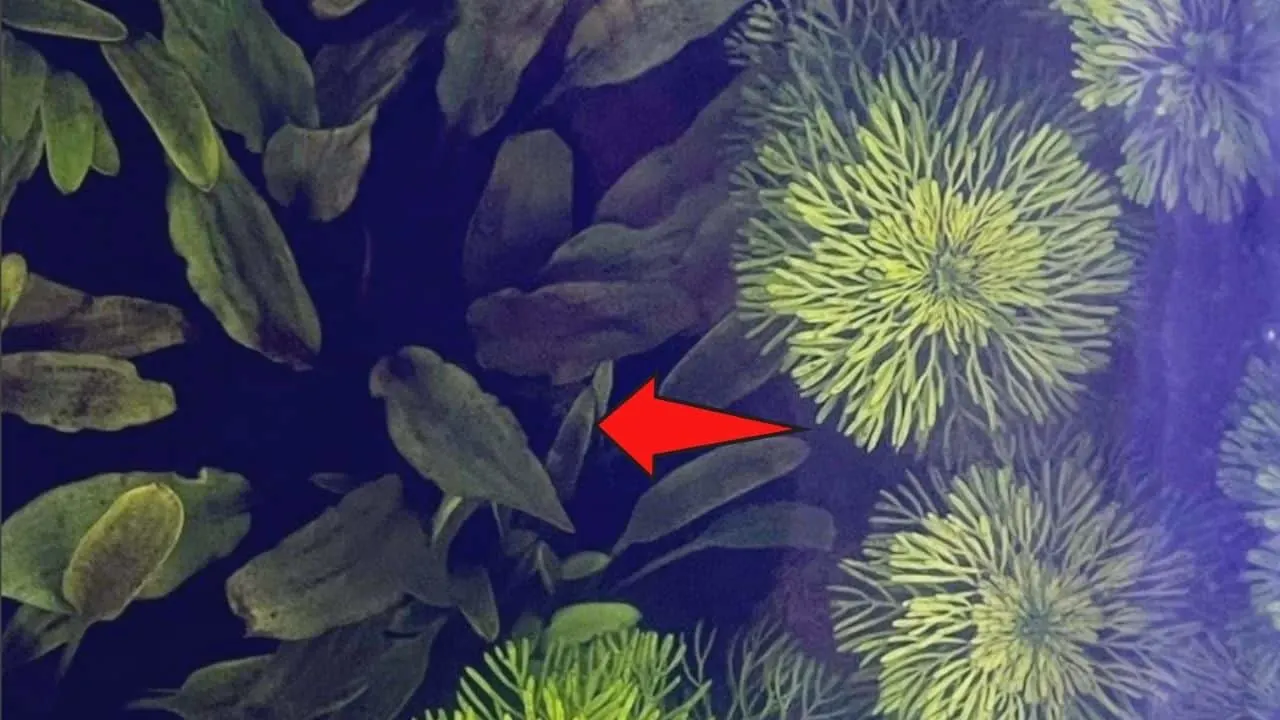
Photo Credit: @amico_acquario on Instagram!
Cryptocoryne Lutea is a slow-growing plant that does not require a lot of pruning. This means you will not have to spend most of your time trimming the plant until it has become mature.
It is a hardy plant and can survive in many different environments. Its binomial nomenclature and basic plant care requirements include:
- Common name: Crypt Lutea
- Scientific name: Cryptocoryne Lutea
- Max height: 6-8 inches (15 to 20 cm)
- Care complexity: easy
- Lighting needs: low lighting
- Growth rate: slow
- Additional CO2 required: not needed
- Recommended position: midground
- Fertilization: needs to be fertilized occasionally.
- Temperature: 72 to 79 degrees Fahrenheit (22 – 26 degrees Celsius)
Dwarf Sagittaria
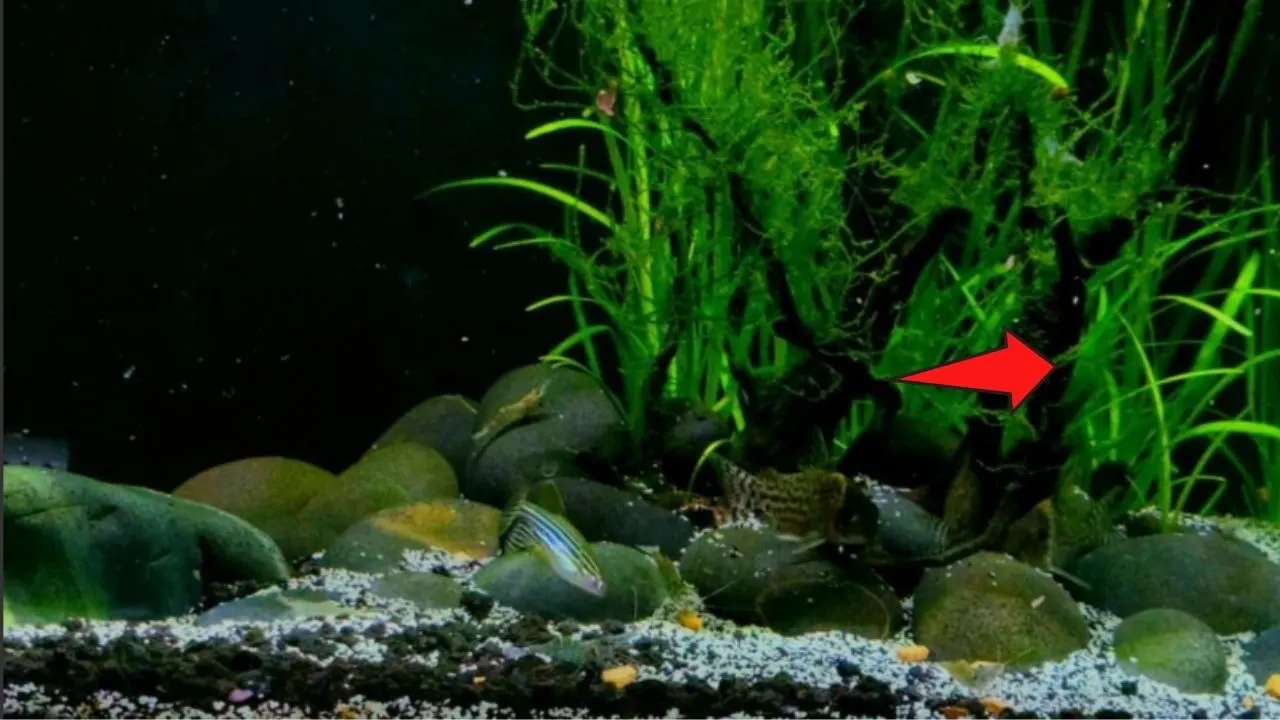
Photo Credit: @paludariaofficial on Instagram!
Dwarf Sagittaria is also a carpeting plant that doesn’t require too much effort to grow. It looks like grass and is extremely similar to miniature Vallisneria.
Its binomial nomenclature and basic plant care requirements include:
- Common name: Needle Saggitaria, Narrow-leaved Arrowhead Floating Arrowhead, and Awl-leaf Arrowhead
- Scientific name: Sagittaria Subulata
- Max height: 3-5 inches (8 to 12 cm)
- Care: easy
- Lighting needs: moderate to high lighting
- Growth rate: Fast
- Additional CO2 required: not needed
- Recommended position: Foreground
- Fertilization: root tabs and liquid fertilizers
- Temperature: 64 to 79 degrees Fahrenheit (17 to 26 degrees Celsius)
This plant is unique because it remains short if you provide it with a lot of light. However, stunted growth can also occur if you keep it under low lighting.
It will grow taller in moderate sunlight in the direction of the brightness. This means you can somewhat customize the look of this plant according to your desires.
Bacopa Caroliniana
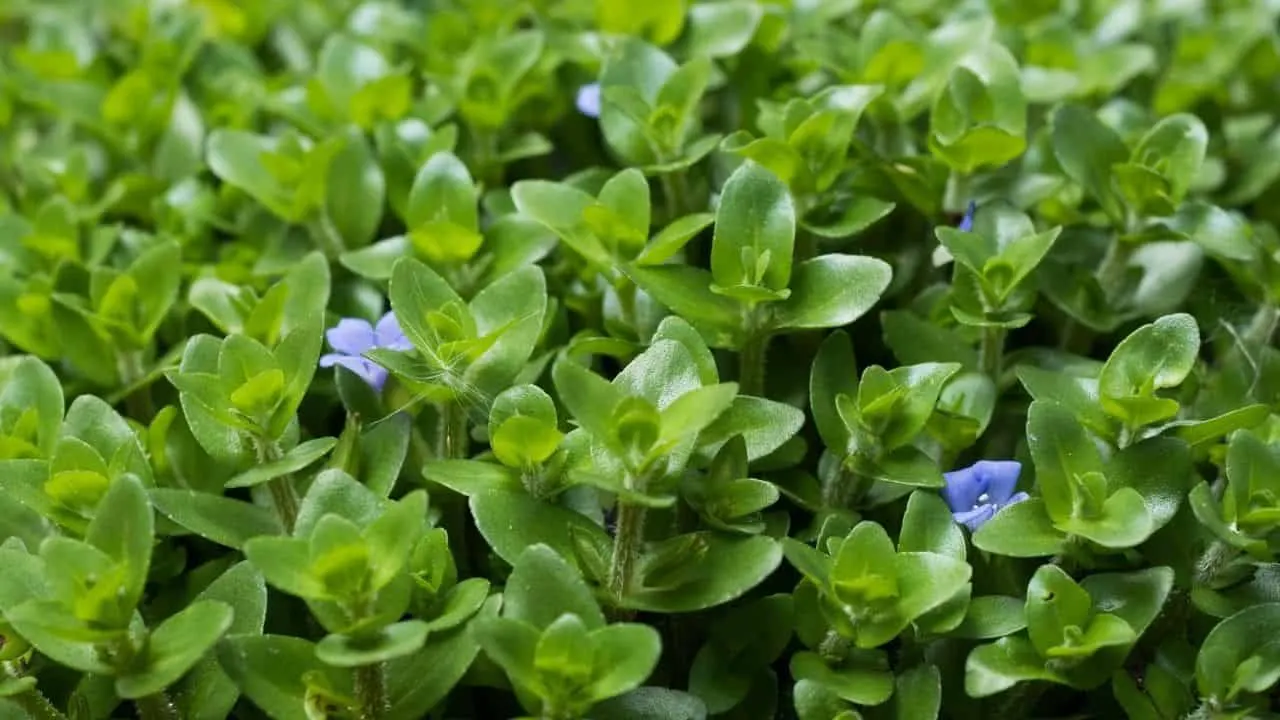
Bacopa Caroliniana is a native plant of the southern United States. It is known to have round leaves which sprout from straight stems.
Its binomial nomenclature and basic plant care requirements include:
- Scientific name: Bacopa Caroliniana
- Common names: Giant red bacopa, water hyssop, and lemon bacopa
- Family: Plantaginaceae
- Temperature: 39 to 84 degrees Fahrenheit (4 to 29 degrees Celsius)
- Fertilizer: Does not need fertilizers as long as the aquarium fishes produce enough waste
- pH value: 5 – 7
- Soil: Does not have specific substrate requirement
- Lighting: Moderate to bright lighting
- Growth rate: Medium
- Placement: Placed above water
Bacopa Caroliniana is first grown outside of water. Then, once the plant has grown, it is placed in water, but the leaves still remain above water.
Dwarf Baby Tears
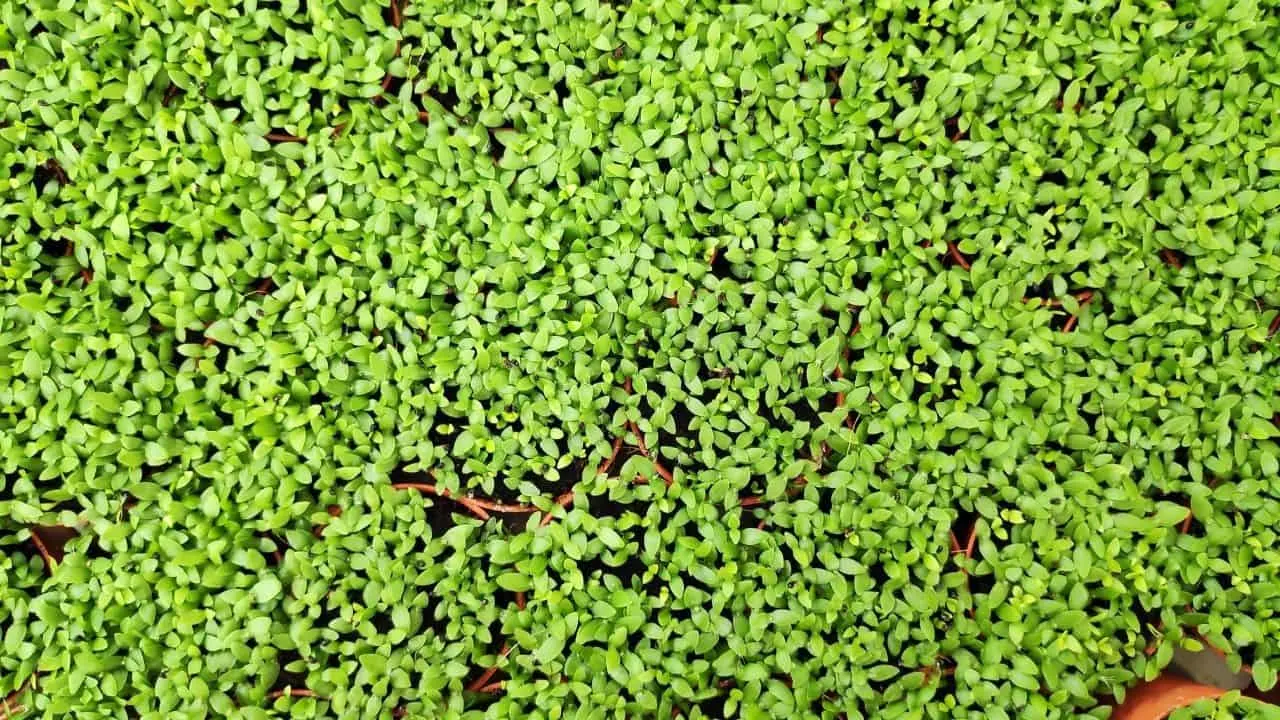
Dwarf Baby Tears is a carpeting plant best suited for tanks used for breeding. When given the proper amount of lighting, it can provide a dense carpet layer on your aquarium.
Its binomial nomenclature and basic plant care requirements include:
- Common name: Dwarf Baby Tears
- Scientific name: Hemianthus callitrichoides
- Height: 5-6 inches (12-15 cm)
- Care complexity: easy
- Lighting needs: medium to high lighting
- Growth rate: Fast
- Additional CO2 required: not required
- Recommended position: foreground
- Fertilization: Constantly needs fertilization
- Temperature: 68 to 82-degree Fahrenheit (20-28 degrees Celsius)
Dwarf Baby Tears produce tiny clusters of leaves that have oxygen bubbles coming onto the surface. These bubbles look stunning in an aquarium as they look like pearls.
This plant is also really affordable and can be used for decorative purposes, carpet protection, and substrate covering.
Marimo Moss Ball
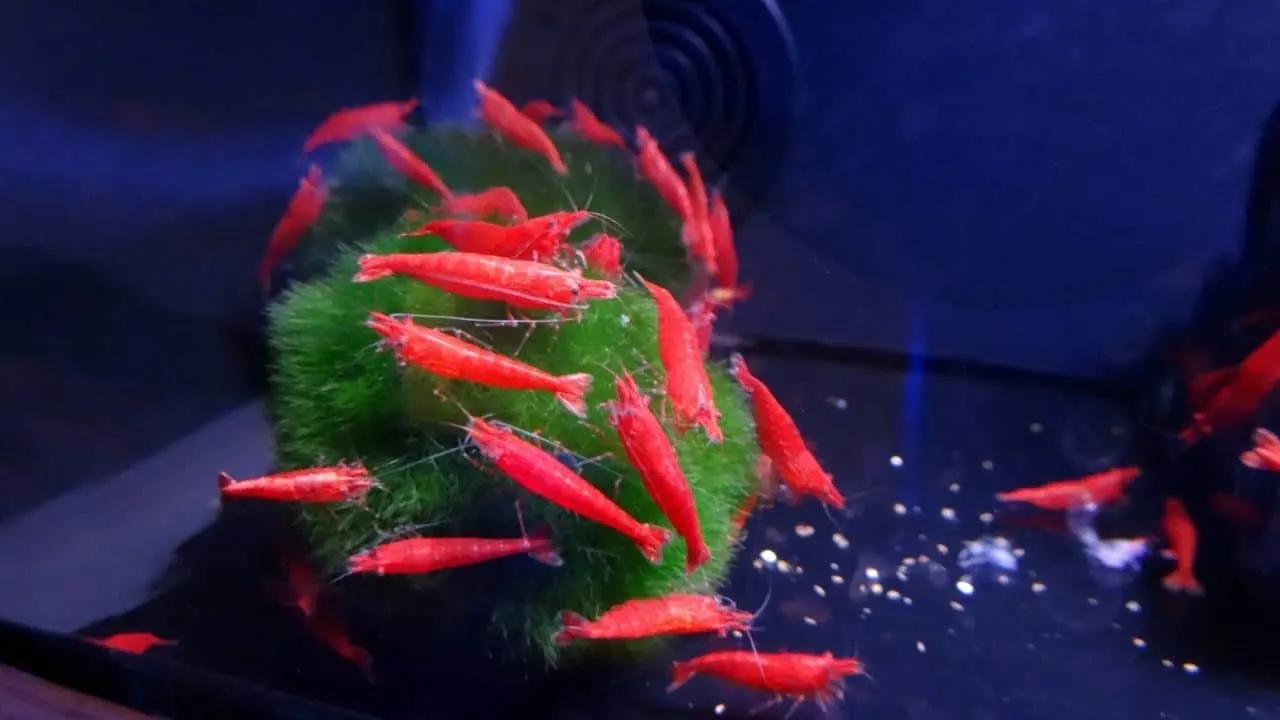
Marimo Moss Ball is not a plant. Instead, it is a green alga that you can grow as an aquarium “plant.”
Its binomial nomenclature and basic plant care requirements include:
- Common name: Marimo Moss Ball or Cladophora ball
- Scientific name: Aegagropila Linnaei
- Height: Depends on how you shape the plant
- Care: easy
- Lighting needs: low to medium
- Growth rate: extremely slow
- Additional CO2 required: not required
- Recommended position: anywhere
- Fertilization: fertilization is not required often but should be fertilized with liquid fertilizer
- Temperature: 43 – 75 degrees Fahrenheit (5 – 24 degrees Celsius)
Marimo Moss Ball is a must-have in your fish tank as you can keep it in a ball shape or spread over rocks.
They can even be kept on wood branches to give a tree-like appearance in your aquarium.
Java Moss
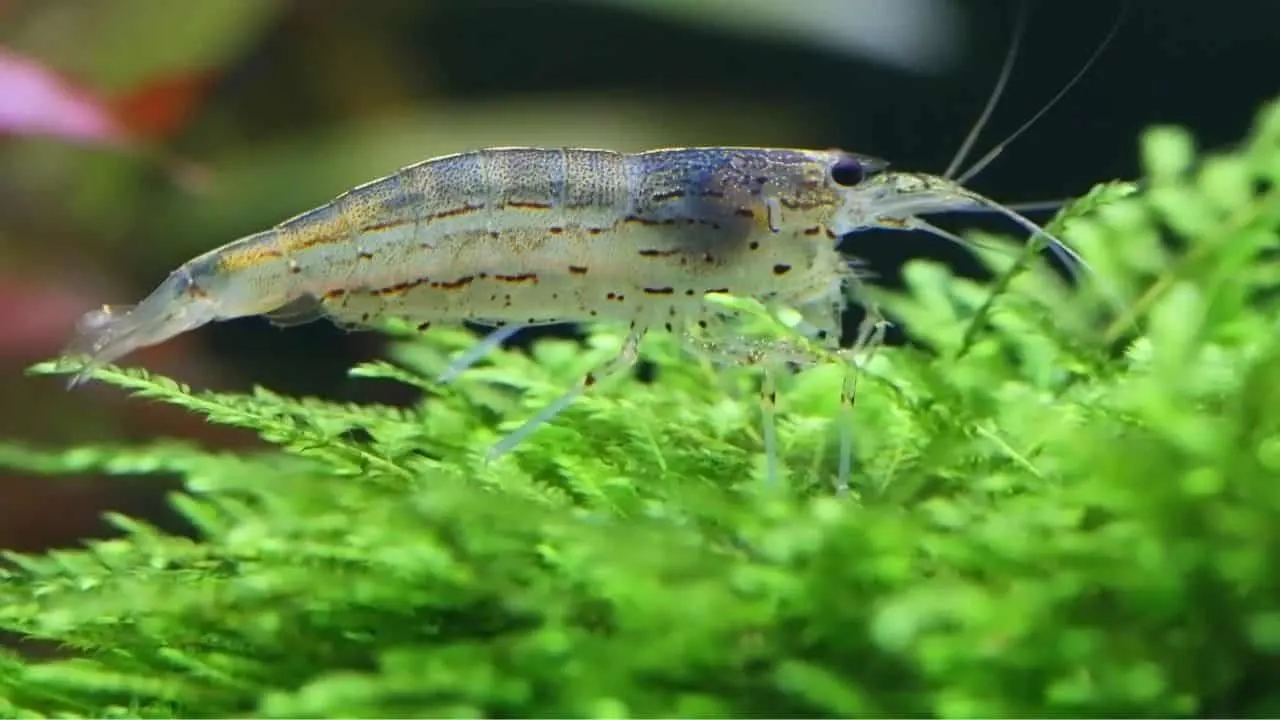
Java moss is a plant most often used for decorative purposes. It’s considered moss rather than a plant, but many aquarium hobbyists love having this in their fish tanks.
It’s a hardy aquatic plant variety that’s capable of withstanding many different conditions.
Java Moss binomial nomenclature and basic plant care requirements include:
- Common name: Christmas moss, triangular moss, Singapore moss, mini moss, dubious bladder moss, and willow moss
- Scientific name: Taxiphyllum barbieri
- Max height: 2–4 inches (5–10 cm)
- Care complexity: easy
- Water pH: 6.0 – 8.0.
- Lighting needs: Low light
- Growth rate: slow-to-medium
- Additional CO2 required: does not need it
- Fertilization: not needed
- Temperature: 70 – 75 degrees Fahrenheit (21 – 24 degrees Celsius)
Vallisneria Gigantea
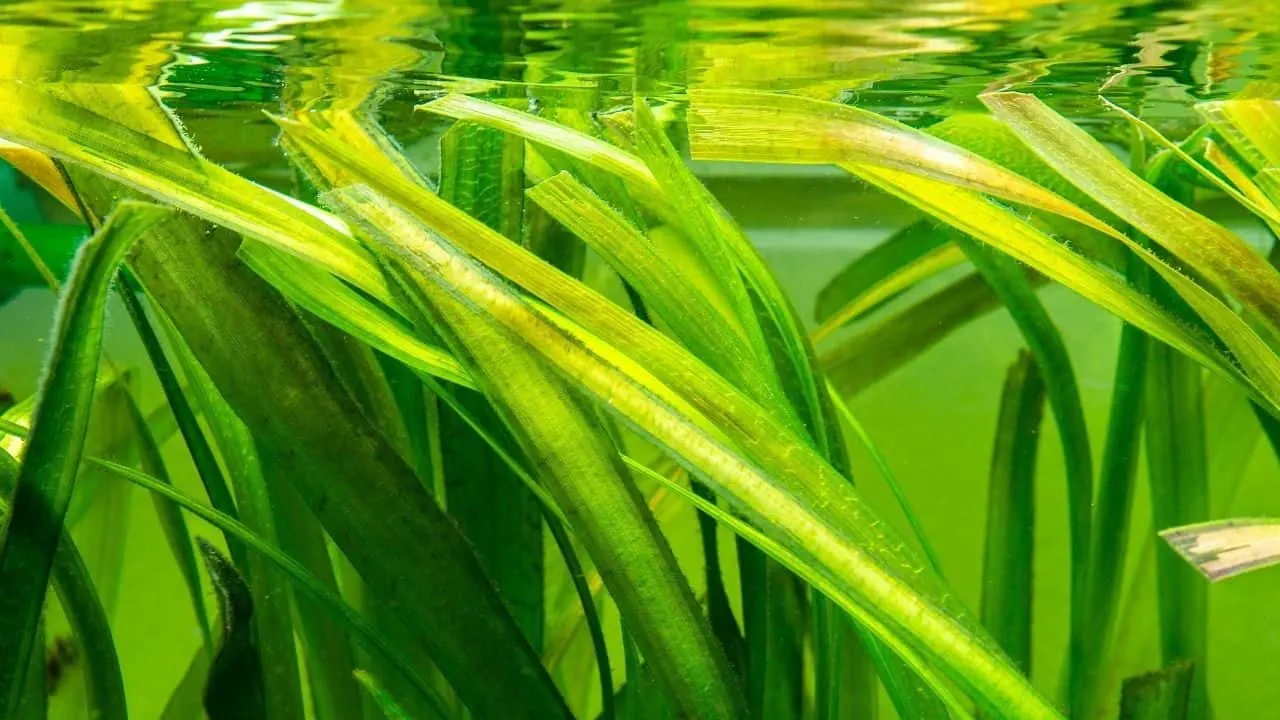
Vallisneria Gigantea is known to grow in ponds, lakes, and quiet streams. It likes calm water or slow-flowing waters.
Vallisneria Gigantea occurs naturally in countries such as:
- Mexico
- the United States of America
- the Philippines
- Papua New Guinea
- India
- Canada
- Australia
- Korea
- Japan
- China
- Iraq
Its binomial nomenclature and basic plant care requirements include:
- Common name: vallistape, tape grass or eelgrass
- Scientific name: Vallisneria Gigantea
- Max height: 20 – 30+ cm (8 to 11 inches)
- Care complexity: easy
- Lighting needs: bright light
- Growth rate: Fast
- Additional CO2 required:
- Recommended position:
- Fertilization: add an iron-rich fertilizer to the aquarium water periodically.
- Temperature: 68 to 82-degree Fahrenheit (20 to 28 degrees Celsius)
Vallisneria gigantea lives well with rougher fishes like:
- Goldfish
- Guppy
- Neon Tetra
- Platy
- Danio
- Betta
- Cherry Barb
- Pearl Gourami
- Kuhli Loach
Vallisneria Gigantea is commonly grown in subtropical to tropical aquaria.
It is very undemanding, grows fast, and is suited to be kept in aquariums.
Mayaca Fluviatilis
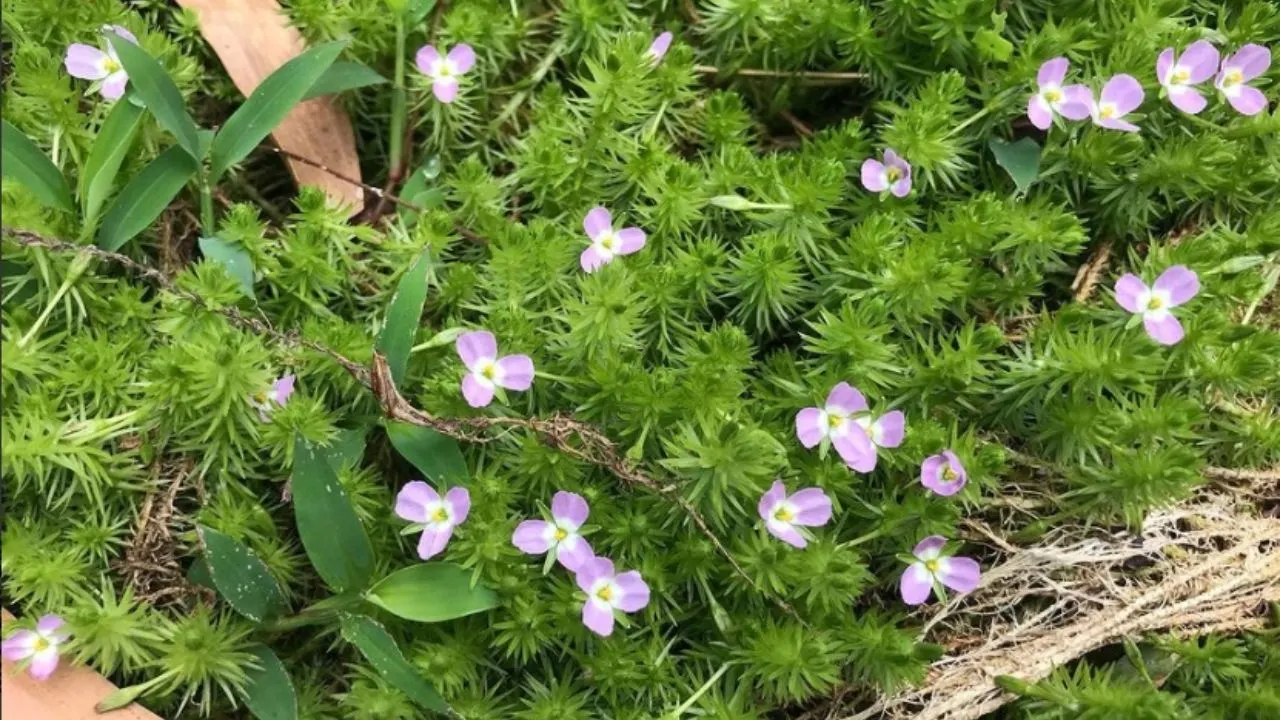
Photo Credit: @covert_ops78 on Instagram!
Mayaca Fluviatilis is quite a popular plant among aquarists who like versatile features in their fish tanks. It is also a great beginner plant as it requires very little maintenance.
Its binomial nomenclature and basic plant care requirements include:
- Common name: stream bog moss
- Scientific name: Mayaca Fluviatilis
- Height: 6 to 12 inches (15 to 30 centimeters)
- Care complexity: easy
- Lighting needs: Moderate lighting
- Growth rate: Fast
- Additional CO2 required: not required
- Recommended position: Background
- Fertilization: requires contestant fertilization
- Temperature: 64 – 86 degrees Fahrenheit (18 – 30 degrees Celsius)
Mayaca Fluviatilis is a stem plant that can be found in both Central and South America. The stems are incredibly soft and very narrow.
Its leaves look bright green and is very graceful-looking.
Conclusion
Once you start to collect your aquarium plants, it won’t take long before you find easy to grow and hardy plants.
Most aquarium plants on this list are easy to maintain and will forgive you if you neglect them for a long time.
You don’t even need expensive carbon dioxide systems for these plants. Just, follow the requirements and you’ll be set to have a beautiful aquarium.

Daniel has been a plant enthusiast for over 20 years. He owns hundreds of houseplants and prepares for the chili growing seasons yearly with great anticipation. His favorite plants are plant species in the Araceae family, such as Monstera, Philodendron, and Anthurium. He also loves gardening and is growing hot peppers, tomatoes, and many more vegetables.

